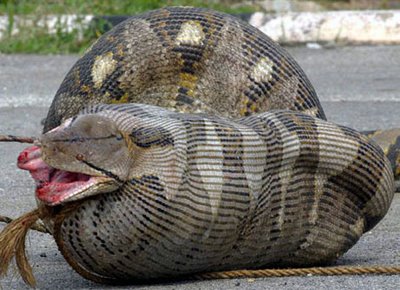




A Dominican infant born with a second head will undergo a risky operation Friday to remove the appendage, which has a partially formed brain, ears, eyes and lips.
The surgery is complicated because the two heads share arteries.
Led by a Los Angles-based neurosurgeon who successfully separated Guatemalan twins, the medical team will spend about 13 hours removing Rebeca Martinez's second head.
The 18 surgeons, nurses and doctors will cut off the undeveloped tissue, clip the veins and arteries and close the skull of the 7-week-old baby using a bone graft from another part of her body.
"We know this is a delicate operation," Rebeca's father, Franklyn Martinez, 28, told The Associated Press. "But we have a positive attitude."
CURE International, a Lemoyne, Pa.-based charity that gives medical care to disabled children in developing countries, is paying for the surgery and follow-up care.
Dr. Jorge Lazareff, director of pediatric neurosurgery at the University of California at Los Angeles' Mattel Children's Hospital, will lead the operation along with Dr. Benjamin Rivera, a neurosurgeon at the Medical Center of Santo Domingo. Lazareff led a team that successfully separated Guatemalan twin girls in 2002.
Doctors say if the surgery goes well Rebeca won't need physical therapy and will develop as a normal child.
Rebeca was born on Dec. 17 with the undeveloped head of her twin, a condition known as craniopagus parasiticus.
Twins born conjoined at the head are extremely rare, accounting for one of every 2.5 million births. Parasitic twins like Rebeca are even rarer.
Rebeca is the eighth documented case in the world of craniopagus parasiticus, said Dr. Santiago Hazim, medical director at CURE International's Center for Orthopedic Specialties in Santo Domingo, where the surgery will be performed.
All the other documented infants died before birth, making it the first known surgery of its kind, Lazareff and Hazim said.
Hazim said the surgery must be done now so the pressure of Rebeca's other brain doesn't prevent her from developing.
Rebeca shares blood vessels and arteries with her second head. Although only partially developed, the mouth on her second head moves when Rebeca is being breast-fed. Tests indicate some activity in her second brain.
Martinez and his 26-year-old wife, Maria Gisela Hiciano, say doctors told them before Rebeca was born that she would have a tumor on her head, but none of the prenatal tests showed a second head developing.
Martinez works at a tailor's shop. Hiciano is a supermarket cashier. Together they make about $200 a month. They have two other children, ages 4 and 1.
Lazareff says Rebeca's chances of survival are good. Still, he refuses to make a prognosis.
"We'll do everything we can to make this successful," he said.
 BANNO loves beer, she guzzles at least three to four bottles everyday. And if she doesn't get her quota, she can even turn violent. In fact, Banno has been hooked on the drink for the last decade or so, even as her peers favour bananas. For Banno is a female monkey in Nawabganj locality of Unnao.
BANNO loves beer, she guzzles at least three to four bottles everyday. And if she doesn't get her quota, she can even turn violent. In fact, Banno has been hooked on the drink for the last decade or so, even as her peers favour bananas. For Banno is a female monkey in Nawabganj locality of Unnao. 


















































